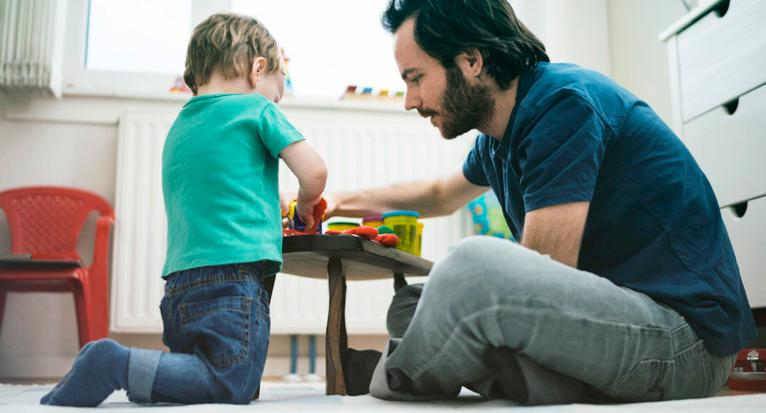"Caregivers whose eyes wander during playtime—perhaps to glance at a phone—may raise kids with shorter attention spans, a new study suggests.
The work is the first to show a direct connection between how long a caregiver looks at an object and how long an infant’s attention remains focused on the same thing.
“The ability of children to sustain attention is known as a strong indicator for later success in areas such as language acquisition, problem-solving, and other key cognitive development milestones,” says Chen Yu, professor of psychological and brain sciences at Indiana University.
“Caregivers who seem distracted or whose eyes wander a lot while their children play appear to negatively impact infants’ burgeoning attention spans during a key stage of development.”
“Historically, psychologists regarded attention as a property of individual development,” says coauthor Linda Smith, also a professor of psychological and brain sciences. “Our study is one of the first to consider attention as impacted by social interaction. It really appears to be an activity performed by two social partners since our study shows one individual’s attention significantly influence another’s.”
For the study, published in the journal Current Biology, caregivers and babies wore head-mounted cameras. Scientists got a first-person view of parents and children playing together in an environment that closely resembled a typical play session at home or day care. The technology also allowed the parents and children to play with actual toys, rather than a typical eye-tracking study of children manipulating objects on a screen.
Caregivers were given no instructions before engaging with children to ensure the psychologists got an unfiltered view of their interactions.
- LET BABIES LEAD:
Generally, caregivers fell into two major groups: those who let the infants direct the course of their play and those who attempted to forcefully guide the infants’ interest toward specific toys.
“A lot of the parents were really trying too hard,” Yu says. “They were trying to show off their parenting skills, holding out toys for their kids and naming the objects. But when you watch the camera footage, you can actually see the children’s eyes wandering to the ceilings or over their parents’ shoulders—they’re not paying attention at all.”
The caregivers who were most successful at sustaining the children’s attention were those who “let the child lead.” These caregivers waited until they saw the children express interest in a toy and then jumped in to expand that interest by naming the object and encouraging play.
“The responsive parents were sensitive to their children’s interests and then supported their attention,” Yu says. “We found they didn’t even really need to try to redirect where the children were looking.”
The gains in attention for children in this group were significant. In cases where infants and caregivers paid attention to the same object for over 3.6 seconds, the infant’s attention lingered 2.3 seconds longer on average on the same object even after the caregiver’s gaze turned away. This extra time works out to nearly four times longer compared to infants whose caregivers’ attention strayed relatively quickly.
The impact of a few seconds here and there may seem small. But when they are magnified over a play session—and those play sessions occur over months of daily interaction during a critical stage in mental development—the outcomes grow significantly, Yu says. A number of other studies tracking the influence of sustained attention in children from ages 1 through grade school show consistently that longer attention spans at an early age are a strong predictor of later achievement.
The shortest attention spans in the study were observed in a third group, in which caregivers displayed extremely low engagement with children while playing. These distracted caregivers tended to sit back and not play along, or simply look elsewhere during the exercise.
“When you’ve got someone who isn’t responsive to a child’s behavior,” Yu says, “it could be a real red flag for future problems.”
The National Institutes of Health supported the work".
Fuente: www.futurity.org
